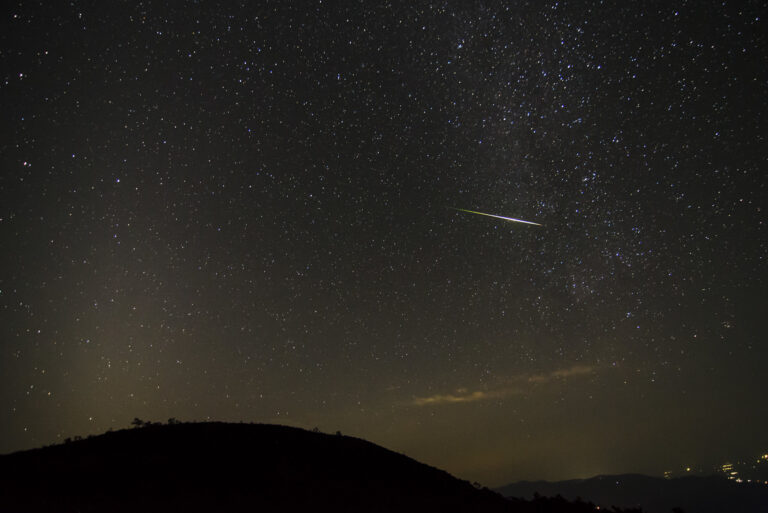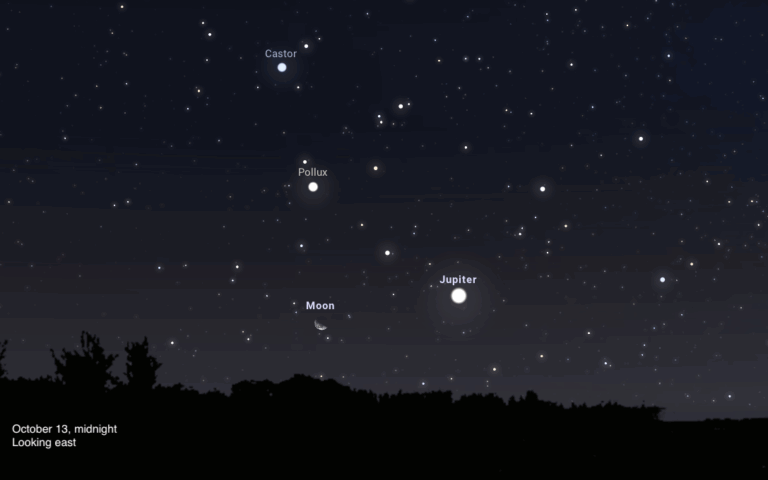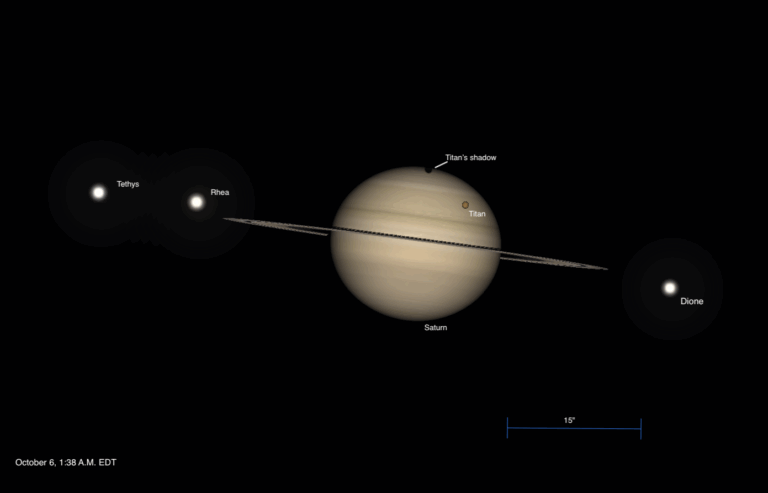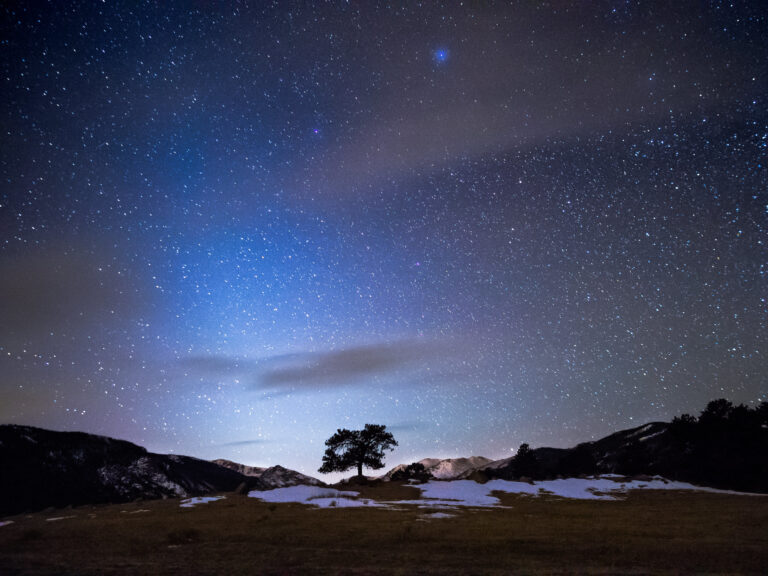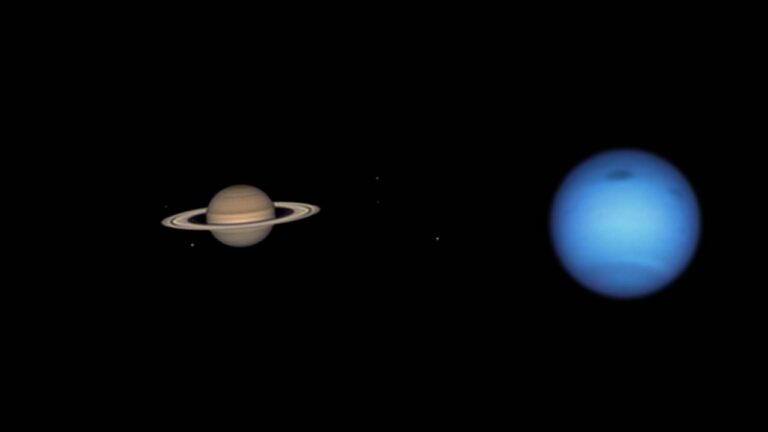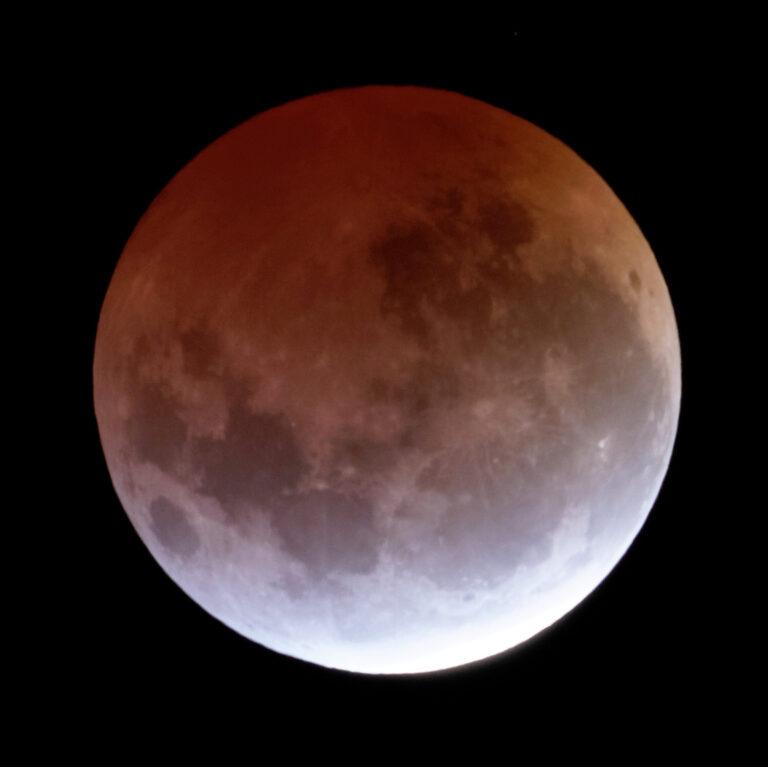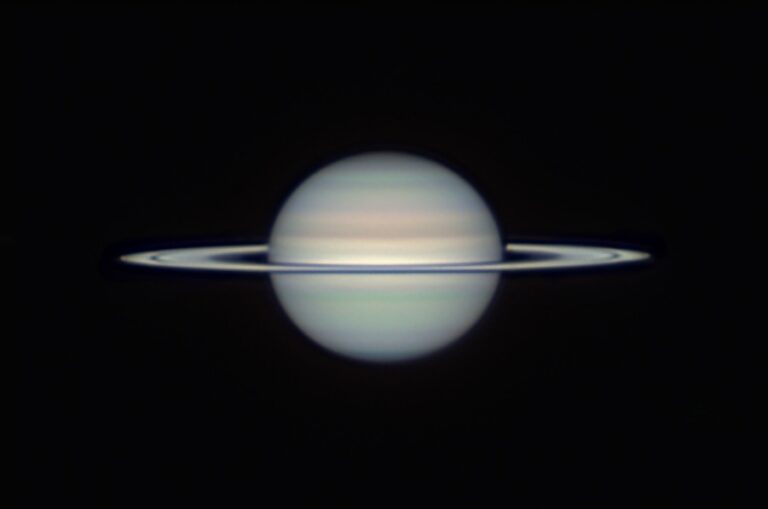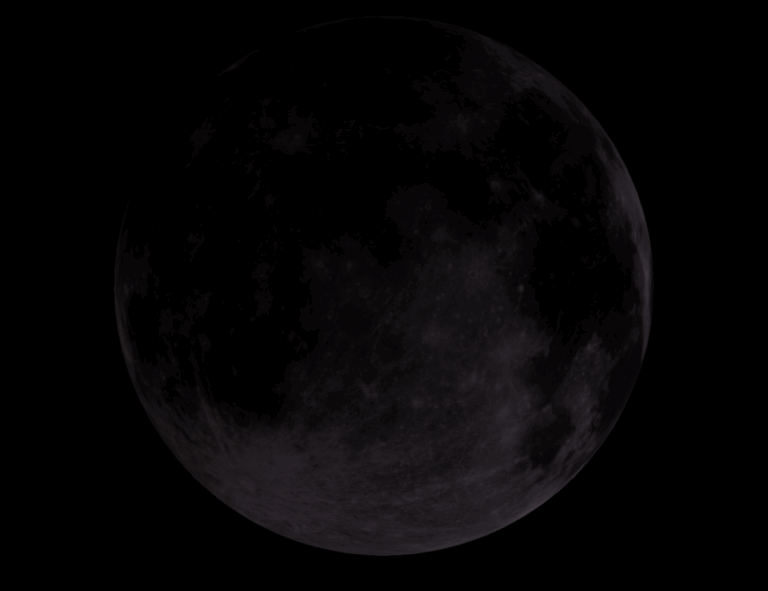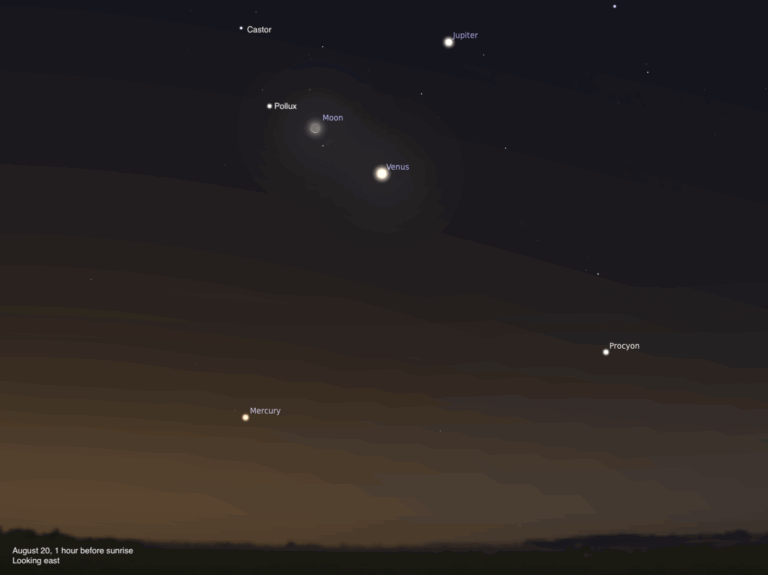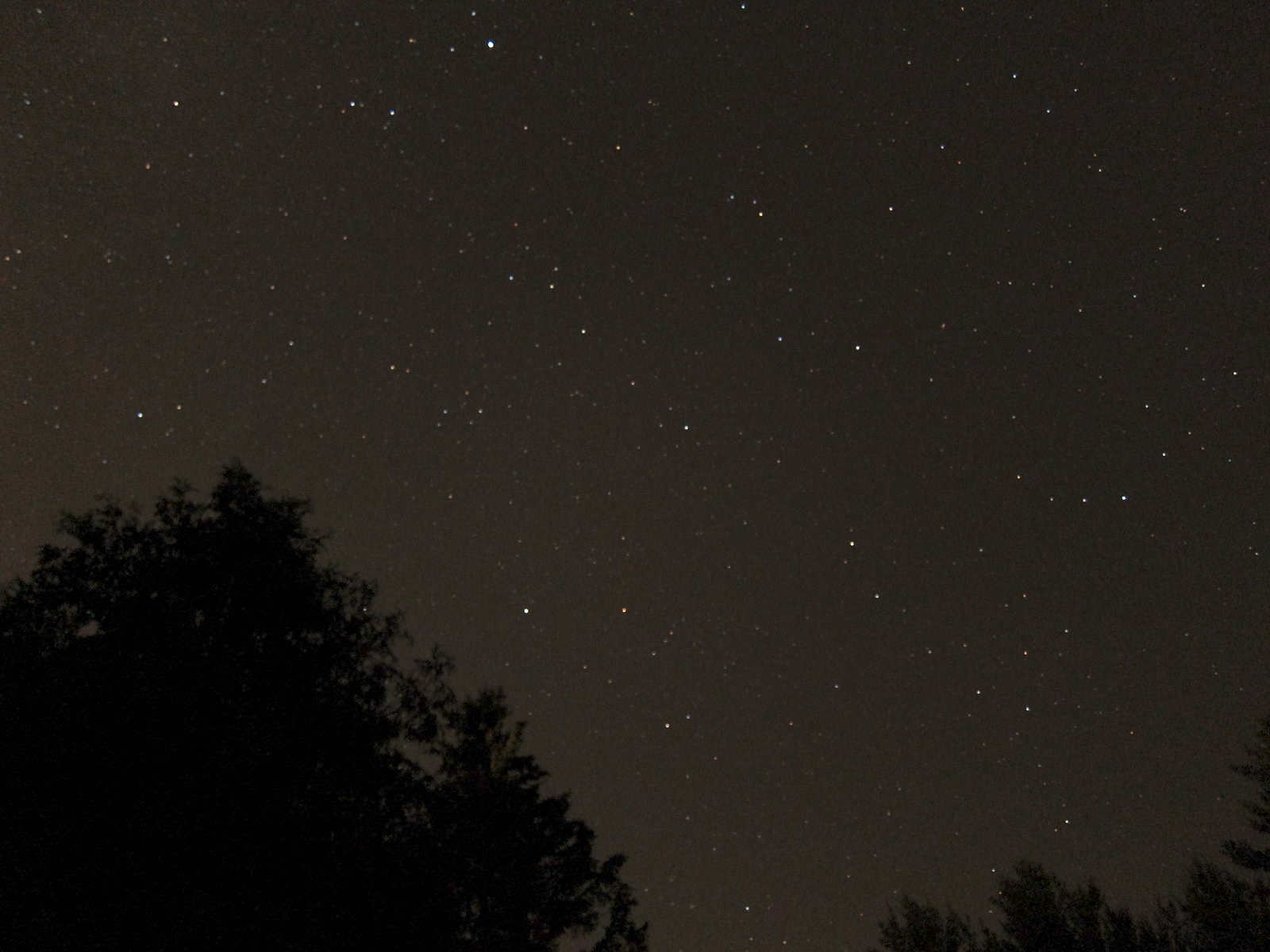
Key Takeaways:
- On September 12, Mars will appear near Spica, while the Moon will pass near Uranus. The Pleiades and the Hyades star cluster will also be visible.
- Mercury will be in superior conjunction on September 13, making it invisible, while Jupiter and Venus will be visible in the morning sky.
- A last quarter moon will occur on September 14, with potential occultation of the star Beta Tauri (Elnath) visible in some locations. Comet C/2024 E1 Wierzchoś will be observable near Iota Coronae Borealis on September 15.
- On September 16, the Moon will pass near Jupiter, with potential for observing a shadow transit of Europa. Observations of Saturn's moon Iapetus and various other moons are suggested for September 18, and on September 19 the Moon will pass near Venus and Regulus, with potential occultation of Venus visible from certain locations.

Sky This Week is brought to you in part by Celestron.
Friday, September 12
Mars passes 2° north of 1st-magnitude Spica in Virgo at 4 A.M. EDT, though neither has risen at this time (they rise in daylight, after sunrise). By evening, the pair is sinking in the west, but quick observers can catch them. About 40 minutes after sunset, you can find the Red Planet just to the upper right of the bright, blue-white star, both some 5° above the horizon. They will appear together in a binocular field of view.
Mars is fainter than Spica, as the planet now glows at magnitude 1.6. If you study it with a telescope, you’ll see the martian disk is just 4” wide — too small to make out surface features. Mars is now some 214.7 million miles (345.6 million kilometers) from Earth “lagging behind” our planet as the two worlds orbit the Sun. Because Mars’ orbit is farther from the Sun than Earth’s, it is larger and takes more time for the planet to traverse. Earth will continue pulling ahead and leaving Mars behind in the coming months until Mars reaches solar conjunction, when it will sit on the opposite side of the Sun from Earth.
Later this evening, the Moon passes 5° north of Uranus at 10 P.M. EDT. This is around the time the pair is rising in the east along the U.S. East Coast. Uranus, glowing at magnitude 5.7, will need binoculars or a telescope to spot, and even then will be challenging with the light of the gibbous Moon nearby. You should, however, easily see the Pleiades star cluster (M45) to the upper right of the Moon, appearing to lead our satellite as they rise in the sky.
Almost directly below the Moon and rising a little later is Aldebaran, the bright “eye” of Taurus, along with the Hyades star cluster, sprinkled across the nose of the Bull. The Hyades form a sideways V shape in the sky as they rise, with Aldebaran at one point (although note this star is not actually part of the cluster). Because they’re so widespread, the Hyades make a great binocular object and show up well in wide-field astrophotos or even landscape photography.
Sunrise: 6:38 A.M.
Sunset: 7:13 P.M.
Moonrise: 9:56 P.M.
Moonset: 12:37 P.M.
Moon Phase: Waning gibbous (70%)
*Times for sunrise, sunset, moonrise, and moonset are given in local time from 40° N 90° W. The Moon’s illumination is given at 12 P.M. local time from the same location.
Saturday, September 13
Mercury is in superior conjunction at 7 A.M. EDT, currently invisible as it rises with the Sun. It will reappear in the evening sky by the end of the month.
For now, Jupiter and Venus lead the Sun into the early-morning sky, rising around 1:30 A.M. and 4:15 A.M. local daylight time, respectively. Jupiter stands some 7.5° to the right of the bright star Pollux in Gemini as they rise. Magnitude 1.2 Pollux marks the head of one twin, while just above it, magnitude 1.6 Castor marks the other. Jupiter, at magnitude –2.0, far outshines them both.
All the planets in our solar system lie along the ecliptic, an imaginary line in the sky marking the plane of Earth’s orbit around the Sun (the plane of our solar system). You can find the ecliptic by looking to the lower left of Jupiter, down through central Cancer to land on bright Venus in Leo, about 10° above the eastern horizon around 5:15 A.M. local daylight time. Venus is a blazing magnitude –3.9, far outshining anything else in the eastern sky and impossible to miss. Over the next several days, it will close in on bright Regulus, Leo’s magnitude 1.4 alpha star, which currently lies about 7.5° to Venus’ lower left, also along the ecliptic. We’ll check back with this pair at the end of the week, as the Moon also passes by.
Sunrise: 6:39 A.M.
Sunset: 7:12 P.M.
Moonrise: 10:46 P.M.
Moonset: 1:53 P.M.
Moon Phase: Waning gibbous (58%)
Sunday, September 14
Last Quarter Moon occurs at 6:33 A.M. EDT, standing high in the early-morning sky. You can catch it before dawn in northeastern Taurus, located within 1° of the magnitude 1.7 star Beta (β) Tauri, also called Elnath. This star marks the tip of one of Taurus’ two horns, but has an interesting dual identity: It is also part of the constellation Augira, falling on the current border of Auriga and Taurus and carrying the designation Gamma (γ) Aurigae as well as Beta Tau.
Most U.S. observers will only see the Moon approach the star before day breaks or, farther west, slide just past Elnath without touching it. However, some southern and southwestern U.S. observers as well as many in Mexico and some in Central America will see the Moon cover Elnath in an occultation. The timing is heavily location dependent. For example, the star vanishes from the sky above Albuquerque, New Mexico, seconds before 5:50 A.M. MDT. You can check whether you will see an occultation and find the times the star will vanish and reappear from your location on the International Occultation Timing Association’s webpage for the event here.
Sunrise: 6:40 A.M.
Sunset: 7:10 P.M.
Moonrise: 11:46 P.M.
Moonset: 3:00 P.M.
Moon Phase: Waning crescent (47%)
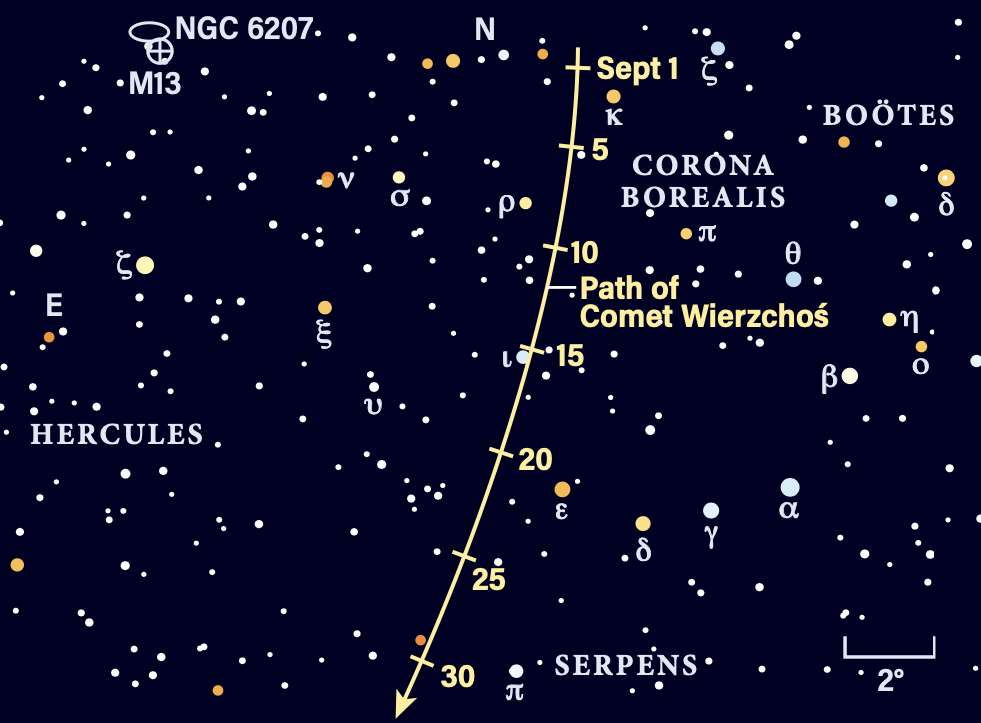
Monday, September 15
Now roughly 14th magnitude, Comet C/2024 E1 Wierzchoś is ripe for spotting with an 8-inch scope. With no Moon in the evening sky, darkness is on your side; and tonight and tomorrow night, the comet lies just 0.5° from 5th-magnitude Iota (ι) Coronae Borealis, the easternmost star in the curved Northern Crown.
Around 9 P.M. local daylight time, Corona Borealis is still more than 40° high in the west. Comet Wierzchoś floats in the southwestern region of the constellation, some 6.4° directly above magnitude 2.2 Alphecca (Alpha [α] CrB) as it’s setting. You can identify Iota by eye from a dark site, then center it in your eyepiece to locate Wierzchoś about ¼° to the star’s northwest, visible in the same telescopic field of view.
Tomorrow, the same technique for finding the comet will work, only look for Wierzchoś the same distance (¼°) south-southwest of Iota. By the 17th, Wierzchoś is ¾° south of the star, and just over a full degree south-southeast of Iota on the 18th. You can follow the comet’s progress using the chart above. If you can’t spot the comet visually, astrophotos may pick it up, as they can collect much more light than your eye.
Discovered in March 2024, Comet Wierzchoś will reach perihelion in early January, brightening along the way. Astronomers hope it might reach 5th magnitude by early next year, so it’s one to keep an eye on!
Sunrise: 6:41 A.M.
Sunset: 7:08 P.M.
Moonrise: —
Moonset: 3:57 P.M.
Moon Phase: Waning crescent (30%)
Tuesday, September 16
The Moon passes 5° north of Jupiter at 7 A.M. EDT. Early risers can enjoy the pairing before sunrise, standing some 50° high in the east an hour before the Sun crests the horizon. Now in its waning crescent phase, the Moon is less than 30 percent lit and not quite so glaring, allowing you to make out the stars of the surrounding constellations. The Moon is some 4° west of Pollux this morning, standing between this star and Jupiter.
All four of Jupiter’s Galilean moons are visible, best seen with a telescope (any size will do). To the planet’s east, Europa is closer with Io farther out; to the west, Callisto is closest and Ganymede is farthest from the planet. Observers in the western two-thirds of the U.S. might be able to catch a shadow transit as Europa closes in, casting its shadow on Jupiter’s cloud tops beginning around 6 A.M. CDT. The sky is brightening for those in the Central time zone at this time, so observers farther west will have a better view. Follow the shadow as long as you can, but take care to put away any optics at least several minutes before sunrise from your location, which may differ from the time given below.
The shadow is still nearing the planet’s western limb when Europa’s transit finally begins around 6:20 A.M. PDT, very close to sunrise on the West Coast.
Sunrise: 6:42 A.M.
Sunset: 7:07 P.M.
Moonrise: 12:53 A.M.
Moonset: 4:42 P.M.
Moon Phase: Waning crescent (26%)
Wednesday, September 17
NGC 457, also known as the Owl Cluster, is visible all evening, presenting an excellent target for binoculars and telescopes alike.
Look northeast after dark to find the W-shaped constellation Cassiopeia. With the letter oriented the right way up as it rises, the first dip (on the left) is marked by magnitude 2.7 Delta (δ) Cassiopeiae. Just 2.1° southwest of this star is 5th-magnitude Phi (φ) Cas, which shines as one of the owl’s two eyes.
From bright Phi, the cluster stretches to the northwest, looking like a bird’s body with its wings outstretched in flight. The cluster shines with a combined magnitude of 6.4 and spans about 13’.
In total, NGC 457 contains nearly 100 stars. The cluster lies roughly 8,000 light-years from Earth — but its two brightest stars, Phi Cas and HD 7902 (the eyes), are not physically part of the group. Instead, they are closer foreground stars, lying between our planet and the young suns of the cluster.
Sunrise: 6:43 A.M.
Sunset: 7:05 P.M.
Moonrise: 2:05 A.M.
Moonset: 5:18 P.M.
Moon Phase: Waning crescent (17%)
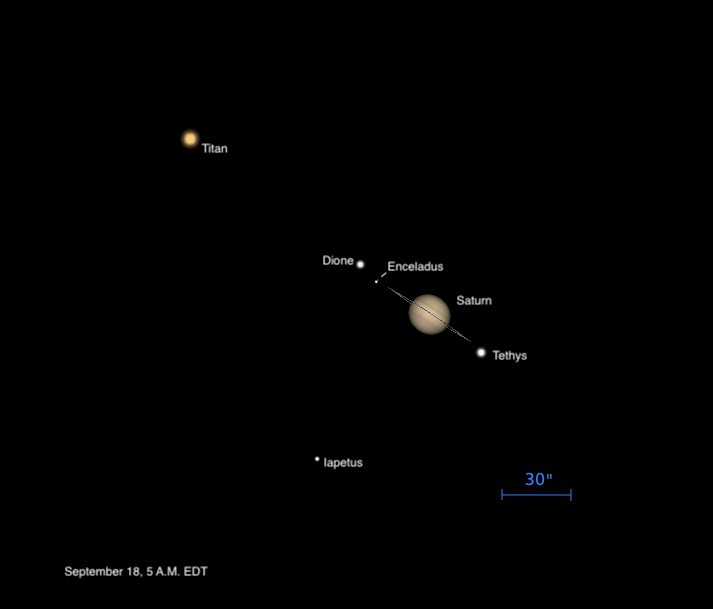
Thursday, September 18
Visit Saturn with your telescope this morning to spot the elusive moon Iapetus at superior conjunction, located due south of the ringed planet.
Saturn is highest in the sky around 1 A.M. local daylight time, when it is roughly 50° high in the south. However, it remains visible through morning twilight, slowly sinking toward the west. The earlier in the morning you can catch it, the better, as it’s higher and you’ll be observing it through less air. You can find it as the brightest point of light in southwestern Pisces, near the Circlet asterism and below the Great Square of Pegasus.
Zoom in on Saturn with a telescope to spot its stunning ring system, now seen nearly edge-on and tilted by only a few degrees. The brightest moon, magnitude 8.4 Titan, lies east of the planet and should be easy to spot. Closer to the rings on the eastern side is 10th-magnitude Dione, while similarly bright Tethys lies near the edge of the rings on the western side of Saturn. In between Dione and the rings on the eastern side, larger telescopes might show 12th-magnitude Enceladus, but don’t be surprised if you can’t spot it.
Iapetus is currently 11th magnitude and lies 1.3′ due south of the planet. This strange, two-toned moon orbits every 79 days, slowly turning as it moves, tidally locked and always showing the same face to Saturn. As seen from Earth, the slow rotation causes its brighter side to face us when it is at western elongation and its dimmer side to face us at eastern elongation. The moon is now heading toward eastern elongation, which it will reach October 7, fading from 11th to 12th magnitude as it heads to a point far east of Saturn.
Sunrise: 6:44 A.M.
Sunset: 7:03 P.M.
Moonrise: 3:16 A.M.
Moonset: 5:46 P.M.
Moon Phase: Waning crescent (10%)
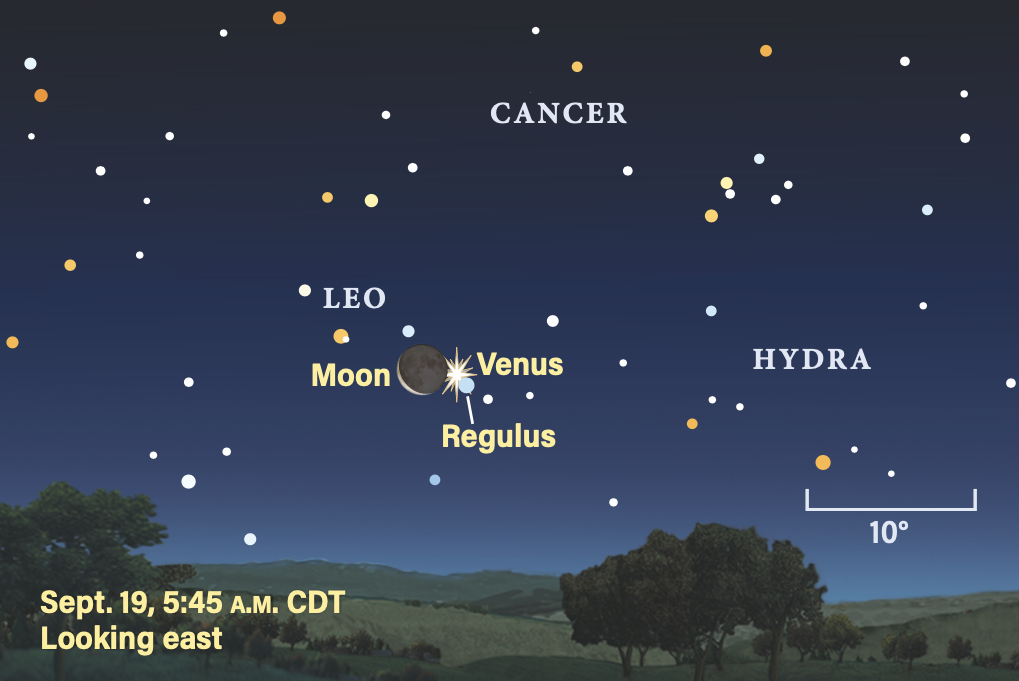
Friday, September 19
We’re back to the predawn sky this morning to catch a three-for-one as the Moon passes 0.8° north of Venus and 1.3° north of magnitude 1.4 Regulus at 8 A.M. EDT, all with Venus less than 0.5° from Regulus as well. (Venus officially passes 0.5° north of Regulus at 9 A.M. EDT.)
The trio rises together around 4:30 A.M. local daylight time. Along the U.S. East Coast, the three are nearly in a vertical line as they rise, with Venus sandwiched between the Moon above it and Regulus below. Both the Moon and Venus are moving northeast (toward the lower left on the sky), with the Moon moving quicker than the planet. The line they create, with Regulus as the stationary base, slowly skews in this direction as the hours pass.
The best time to catch the scene is about an hour before dawn from any location, when the trio is more than 10° high in the east, huddled together in southwestern Leo. All three should show up well in skyscape photos. Through a telescope, Venus is nearly 90 percent lit and its disk stretches 11” wide.
Some locations in Europe, Greenland, and far Northern Canada will see the Moon pass in front of Venus, rather than simply close to the planet — you can find location-dependent details on the International Occultation Timing Association’s site here.
Sunrise: 6:45 A.M.
Sunset: 7:02 P.M.
Moonrise: 4:24 A.M.
Moonset: 6:10 P.M.
Moon Phase: Waning crescent (5%)

